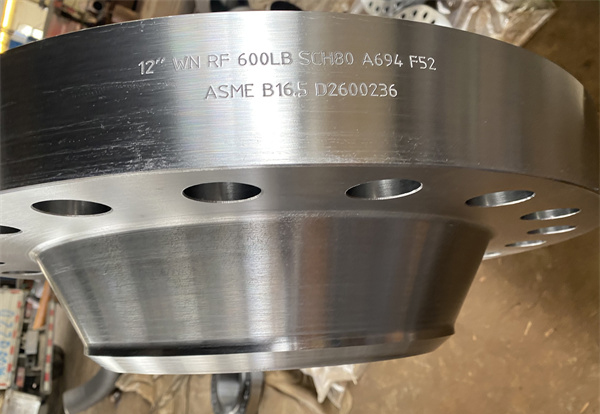Any flange will work in this scenario. When designing the component, it is important to determine whether the integral flange or the loose flange ANSI B16.5 Flange should be used based on the degree of integrity of the flange ring and the straight cylinder section. In comparison to the neck butt welding flange, the flat welding flange has a more straightforward construction and a simpler design. On the other hand, the rigidity and sealing performance of the flat welding flange are not even close to being as good as those of the neck butt welding flange.

As a result of the decrease in the diameter of the seal, the size of the compact flange has also shrunk, which has the effect of reducing the cross-section of the sealing face. Second, a sealing ring has been installed in place of the flange gasket so that the sealing surface can be machined. A flat welding flange not only reduces the amount of space and weight required for the joint, but it also guarantees that the joint will not leak and will have excellent sealing performance.
Because of this, the bolts need to be redesigned to have a larger diameter. Because larger nuts must be mated with larger bolts, nuts with larger diameters must be used with bolts that have a larger diameter. Because of this, it is impossible to screw the nuts in further.
Polishing techniques for dual-phase steel flanges include hand-polishing, mechanical polishing, chemical polishing, and electrochemical polishing. The polishing and cleaning process will result in the discharge of some chromium and phosphorus into the waste water. The entire device will require enormous size and weight, which becomes a particular problem in the offshore environment. Because of the microscopically inconsistent surface of the dual-phase steel flange, the microconvex part on the surface dissolves preferentially, and the rate of dissolution will be higher than that of the concave part. As a result of this, the roughness of the surface of the duplex steel flange is smoothed out, resulting in a surface that is glossy and smooth. Both of these processes will take place simultaneously. Because of the microscopically inconsistent surface of the.

3. This is accomplished by filling surface pores and scratches. It possesses sufficient plasticity and toughness for this forming, as well as excellent resistance to stress corrosion cracking, particularly in environments rich in chloride ions. This is particularly useful in situations where there is a high concentration of chloride ions. Flanges made of duplex steel have yield strengths that are more than twice as high as those made of austenitic stainless steel.
1. The gasket goes through chemical changes, the corrosive medium penetrates into the gasket, the gasket begins blind flanges to soften, loses compressive force, and causes flange leakage as a result of the corrosion effect. This will result in a reduction in the tension that is present between the two flanges, and it will also cause the sealing surface of the sealing surface to become deviated, making it much more likely that there will be a leak.
3. Flange leakage will occur whenever the load pressure of the gasket is exceeded by the pressure of the internal medium. This problem is typically brought on by improper installation or maintenance, and the solution is not too difficult to locate. When the flange clearance is too large, causing external loads (such as axial loads or bending loads), the gasket will be impacted or vibrated, lose the compression force, and gradually lose the kinetic energy of the seal, which will cause the flange to leak. 4. Flange leakWhen installing flanges, the butt joint of two adjacent flanges is the preferred method due to the pressure involved. However, during the production of the system, the temperature of the pipeline will change after it has entered the medium. This can be avoided by keeping the flange clearance as small as possible. When installing flanges, the butt joint of two adjacent flanges is the preferred method due to the pressure involved. This will cause the pipeline to expand or deform, and as a consequence, the flange will be subjected to bending load or shear force, which will easily result in the gasket failing. This will cause the stainless steel flange pipeline to expand or deform.
6. The term "wrong hole" refers to the situation in which the pipe and the flange are concentrically aligned, but the gap between the two bolts is larger than the bolt hole. The thermal expansion and contraction of the fluid medium, as well as the expansion or contraction of the bolt, will cause the gasket to have a gap, which will allow the medium to leak through the pressure. This is referred to as a "wrong hole. ".
